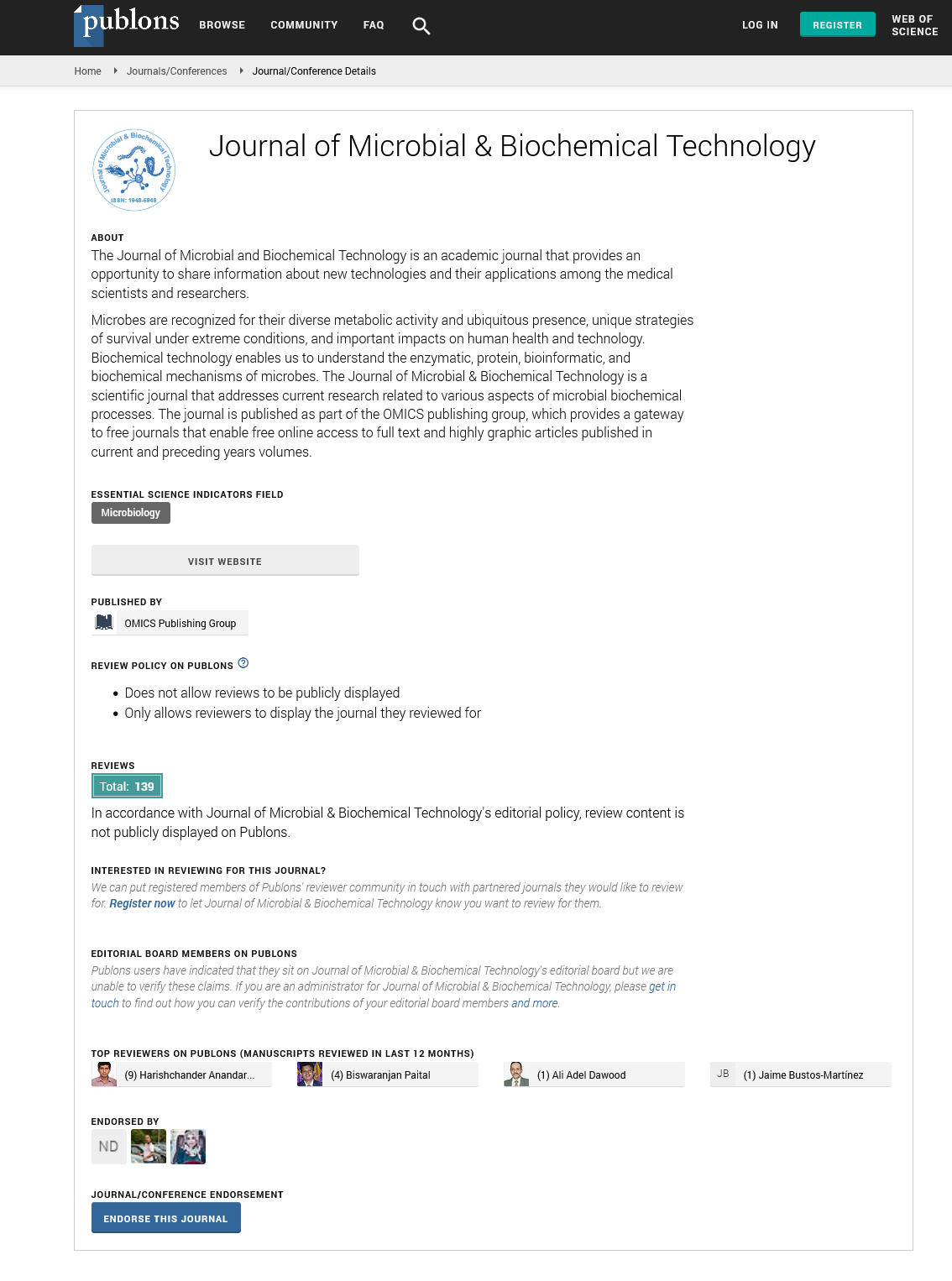PMC/PubMed Indexed Articles
Indexed In
- Academic Journals Database
- Genamics JournalSeek
- Academic Keys
- JournalTOCs
- China National Knowledge Infrastructure (CNKI)
- Scimago
- Access to Global Online Research in Agriculture (AGORA)
- Electronic Journals Library
- RefSeek
- Directory of Research Journal Indexing (DRJI)
- Hamdard University
- EBSCO A-Z
- OCLC- WorldCat
- SWB online catalog
- Virtual Library of Biology (vifabio)
- Publons
- MIAR
- University Grants Commission
- Geneva Foundation for Medical Education and Research
- Euro Pub
- Google Scholar
Useful Links
Share This Page
Journal Flyer

Open Access Journals
- Agri and Aquaculture
- Biochemistry
- Bioinformatics & Systems Biology
- Business & Management
- Chemistry
- Clinical Sciences
- Engineering
- Food & Nutrition
- General Science
- Genetics & Molecular Biology
- Immunology & Microbiology
- Medical Sciences
- Neuroscience & Psychology
- Nursing & Health Care
- Pharmaceutical Sciences
Abstract
Decay of Soluble CD30 and HIV-1 Plasma Viral Load during Early Highly Active Antiretroviral Therapy: A Short-Term Longitudinal Study
Sagoe KWC, Duedu KO, Seshie M, Agyei AA and Ziga F
Background: Soluble CD30 (sCD30) has been suggested as a useful marker for estimating medium to long term viral suppression during antiretroviral therapy. High titres are also associated with hepatitis B and C virus (HBV/ HCV) infections. It is unclear if sCD30 can be used to determine short term antiretroviral responses in individuals with only HIV infection and those co-infected with HBV or HCV.
Method: Plasma samples for baseline, days 7 and 28 from 18 individuals co-infected with HIV and HBV, 5 having anti-HCV, and controls with only HIV infection were obtained from a cohort of 138 HIV infected patients with baseline CD4+ counts of ≤ 250 cells/μl. Clinical and demographic data was obtained from patient folders and sCD30 titres determined using the Human sCD30 ELISA (Bender MedSystems GmbH, Austria). HIV-1 plasma viral load was done with the COBAS Amplicor Monitor v1.5 tests (Roche Diagnostics).
Results: HIV-1 plasma viral loads differed significantly between the baselines, day 7 and day 28 plasma samples (Krystal Wallis H test, p < 0.005) but such a relationship did not exist for sCD30 titres. There was a positive but insignificant correlation between the two HIV-1 plasma viral load and sCD30 titres for all the three-time points. sCD30 titres did not decline with any unique patterns for individuals infected with HIV infection with or without a particular kind of HBV infection, or with anti-HCV. There was a significant correlation between baseline CD4+ and baseline sCD30 for patients with only HIV infection (Spearman’s rho = 578, p = 0.039), but not those with HIV and HBV coinfection (Spearman’s rho = 379, p = 0.098). Conclusion: The results of this study suggest that it is unlikely that early sCD30 decline will significantly correlate with HIV-1 plasma viral load decline during the first 28 days of ART.

